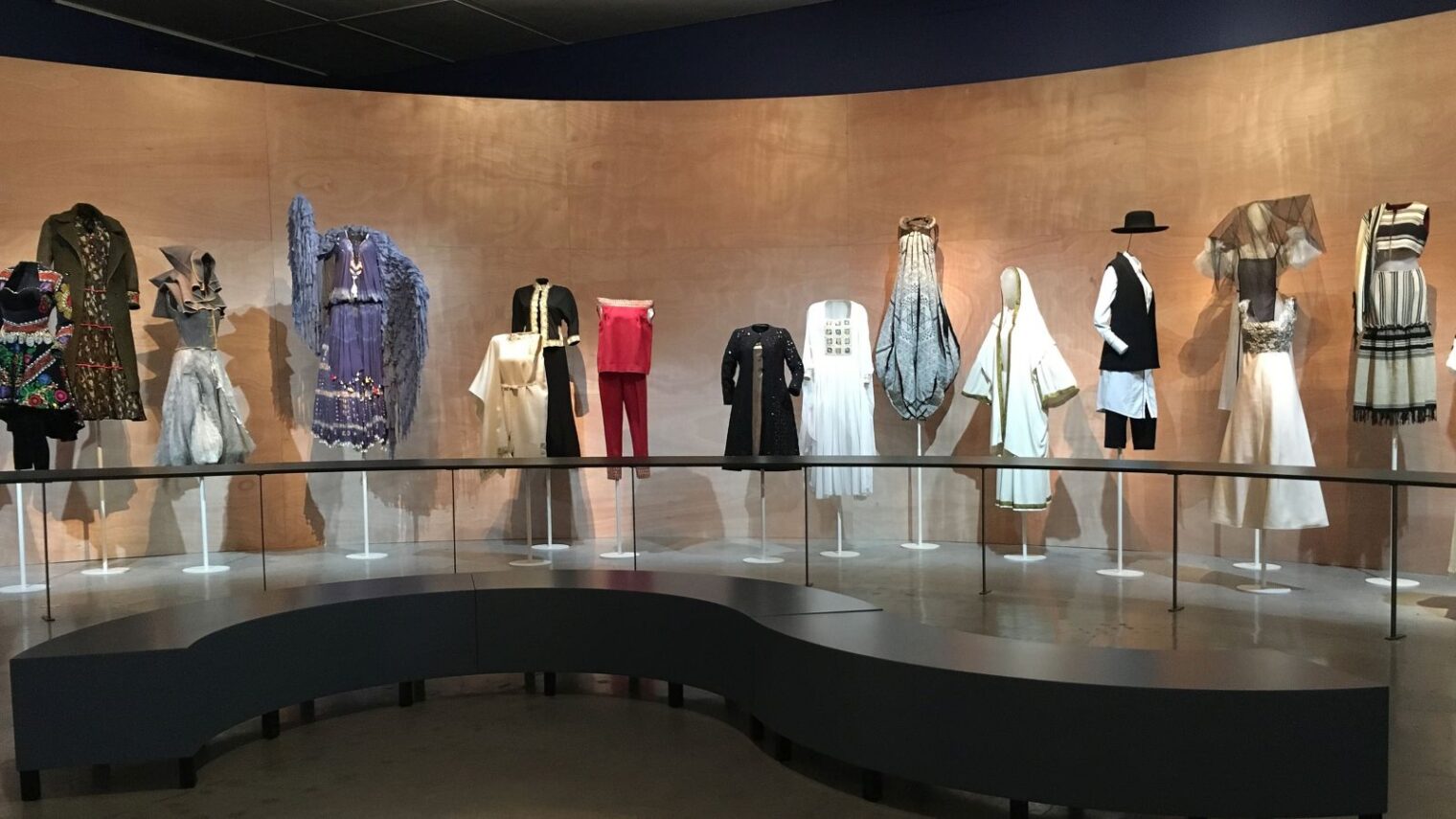Travel anywhere in the world and you’ll find Israelis. You’ll also find Israelis are easily identified by the clothes and shoes they wear. Those clothes may not always be high fashion, but they are instantly recognizable; over the past century, Israel has developed its own style of dress.
Sometimes it is anti-fashion, as was the case for the blue and khaki work clothes that typified the ideal Socialist laborer; other times imitative of styles from abroad, and still other times, as in the case of fashion house Maskit, a deliberate attempt to create something truly Israeli – a synthesis of East and West.
A new exhibition at the Israel Museum, “Fashion Statements – Decoding Israeli Dress“, surveys a century of dress in Israel from the late 19th-century on through today when Israeli designers have taken a place on the global fashion runway.

As described by curators Daisy Raccah-Djivre, Tamara Yovel-Jones, Efrat Assaf-Shapira, and Noga Eliash-Zalmanovich, “Through a sumptuous display of clothing, fashion sketches, films, and fashion photography, this large-scale exhibition illustrates the broad scope of fashion in Israel, from its deepest historical roots to contemporary collections, fostering a dialogue about tradition and modernity, myth and reality, and conflicting ideologies.”
This is not the first time a museum has taken on the matter of Israeli dress.

In 2011, Tel Aviv’s Eretz Israel Museum presented “ATA – Factory, Fashion and Dream,” an exhibit that drew parallels between the story of the ATA textile factory and the changes in Israeli society from the 1930s to the 1980s.
This year alone, the Design Museum Holon presented “Je t’aime, Ronit Elkabetz – Dreams from the Wardrobe,” a tribute to the late actress, screenwriter, director and style icon; while in the spring, the Tel Aviv Artists House hosted “Blue and White Collar,” an exhibit created in conjunction with the Shenkar School of Engineering, Design and Art, that sought to re-interpret traditional Israeli garments like the aforementioned products of ATA, Maskit and the IDF.

Halfway around the world, the humble soft cloth cap known popularly as the kova tembel (dunce cap) has even made it to MOMA.
The Israel Museum’s retrospective is unusual both in scale and because it contextualizes Israeli modes of dress in terms of culture and ideology, instead of a chronological presentation.
Visitors move between four spaces: the first shows the inspirations of the physical place alongside the influences of the diverse cultural landscape; the second space presents fashion in light of the two contrasting realities of early Statehood: local austerity versus “New Look” high fashion of the postwar era. The third space screens films about the local industry in the 60s and 70s, while the fourth poses the question facing contemporary Israeli designers: how and what to create in light of that history.

The exhibition was the brainchild of Yovel-Jones, who last year retired from her position as head of the Department of Jewelry and Fashion at the Bezalel Academy of Arts and Design.
In an interview with “At” magazine, Yovel-Jones said the idea had been percolating for eight years. “The world is full of fashion shows, everyone goes specially to see them, yet the story of Israeli fashion had not been told. Two and a half years ago, I decided to give it a try.

“My friends in the profession discouraged me, they said Israeli clothes are simple, not McQueen, not Alaia. But there’s something else here. I felt the need to show the creativity that exists in Israel. After all, why is it that we can always spot the Israelis when we’re abroad? There’s something here. Even our non-style is generated from a kind of ideology.”
The exhibition presents 150 items of clothing by 60 designers and companies, along with photographs and videos, ranging from the time of the establishment of the state to the present day. “Fashion Statements – Decoding Israeli Dress” runs from June 14, 2018 through April 29, 2019 at the Israel Museum in Jerusalem.

















